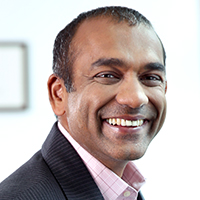I am turning 50 next year. This means I have only 12 more years to work, given that Singapore’s minimum retirement age is 62. In my middle age, I start questioning why retirement is even necessary. I love what I do and going to work gives me a greater sense of purpose every day.
While the Tripartite Workgroup on Older Workers is contemplating raising the statutory retirement age, I believe the policy should be scrapped altogether because of Singapore’s ageing population.
There are four main reasons why we should not have a retirement age.
Historically, a retirement age helps an economy manage and align its workforce with population growth. In a country where there are more young people than an elderly population, not having a retirement age means the young working-age population may not be able to get jobs and as a result, unemployment will rise.
Furthermore, higher unemployment can make or break an election and as a result, is a major point of contention in a democracy. Take India, for example, where 30 to 40 per cent of the population is under 25 years of age. There, a statutory retirement age would make sense. Without it, many of these young working-age adults would be unemployed. However, in ageing economies with low population growth such as Japan, South Korea and Singapore, one questions how a retirement age is still relevant since older workers are not a threat to unemployment.
Second, life expectancy today is longer. Traditionally, retirement is viewed as a rite of passage where employees stop working in order to enjoy the fruits of their labour. Back then, life expectancy was shorter. However, today, the average life expectancy is relatively higher due to advancements in technology, healthcare and lifestyle.
In Singapore, for example, the health-adjusted life expectancy is projected to be 76.7 by 2030. As people live longer, their retirement savings in their Central Provident Fund (CPF) need to sustain them until death. Therefore, they need to continue working.
Research also suggests that retirees are more likely to die sooner than expected due to idleness. The research by the National Bureau of Economic Research in the United States found a robust 2 per cent increase in male mortality after the age of 62, which is when Americans can claim their social security payments. The increase in male mortality is related to being retired from the labour force and associated changes in lifestyle.
Sub-optimal jobs
While Singaporeans can work beyond the retirement age of 62, some employers are using the minimum retirement age as a mechanism to push out older workers. The common perception is that older workers cost more to retain and are less productive. Many employers would rather bring in younger staff who cost less and can be trained. As a result, older workers who do find re-employment are working in sub-optimal jobs.
In the US, where there is no retirement age, the economy has very low unemployment, high wages and high productivity. It is a process of natural selection among older workers, where some choose to continue working, some opt to retire, while others are laid off because they are not as productive.
To avoid a missed opportunity, employers should develop and adopt new strategies on how to use older and more experienced staff to increase productivity, enhance organisational culture and bring additional value to the organisation at the salary paid to them.
In addition, keeping the older and more experienced workers in the workforce would also not jeopardise opportunities for younger workers, given Singapore’s low population growth. Eliminating retirement age would also likely result in Singapore importing fewer foreign talent.
High performers
Employers also need to be empowered. They should have the flexibility to retain high performers and let go of underperformers. To address the high costs of retaining experienced staff, employers can adapt by offering part-time options, agreeing with the staff member to maintain current salary levels, or even re-scoping his job description to that of a consultant, adviser or strategic planner. They need to identify and play on the more experienced staff member’s strengths.
For example, in an academic context, a university may offer a faculty member who is passionate about teaching the option to teach more and do less research. The institution may offer a reduced workload at a corresponding salary. The faculty member stays active as a contributor, while the students get to learn from a great scholar.
With this flexibility, employers are more likely to keep senior employees and not let go of talent.
An official retirement age is no longer a policy relevant to present-day Singapore. Such a policy might be necessary when a country is experiencing rapid population growth. However, in Singapore, we have transitioned from having a large migrant population to one that is more residential and ageing.
We need to recognise that many senior workers bring a wealth of experience and that this experience simply does not just disappear once they turn 62.
Singapore needs to adopt a new mindset and view age as positively correlated with valuable experience and proven talent, rather than ineptitude.
Only when this happens will we see the benefits – increased productivity, better skills continuity through mentorship and training, and less pressure on our CPF system as more older workers will continue to work and contribute to, rather than draw down on, CPF balances. This can be a win-win for both employers and employees, as well as the Singapore economy.




